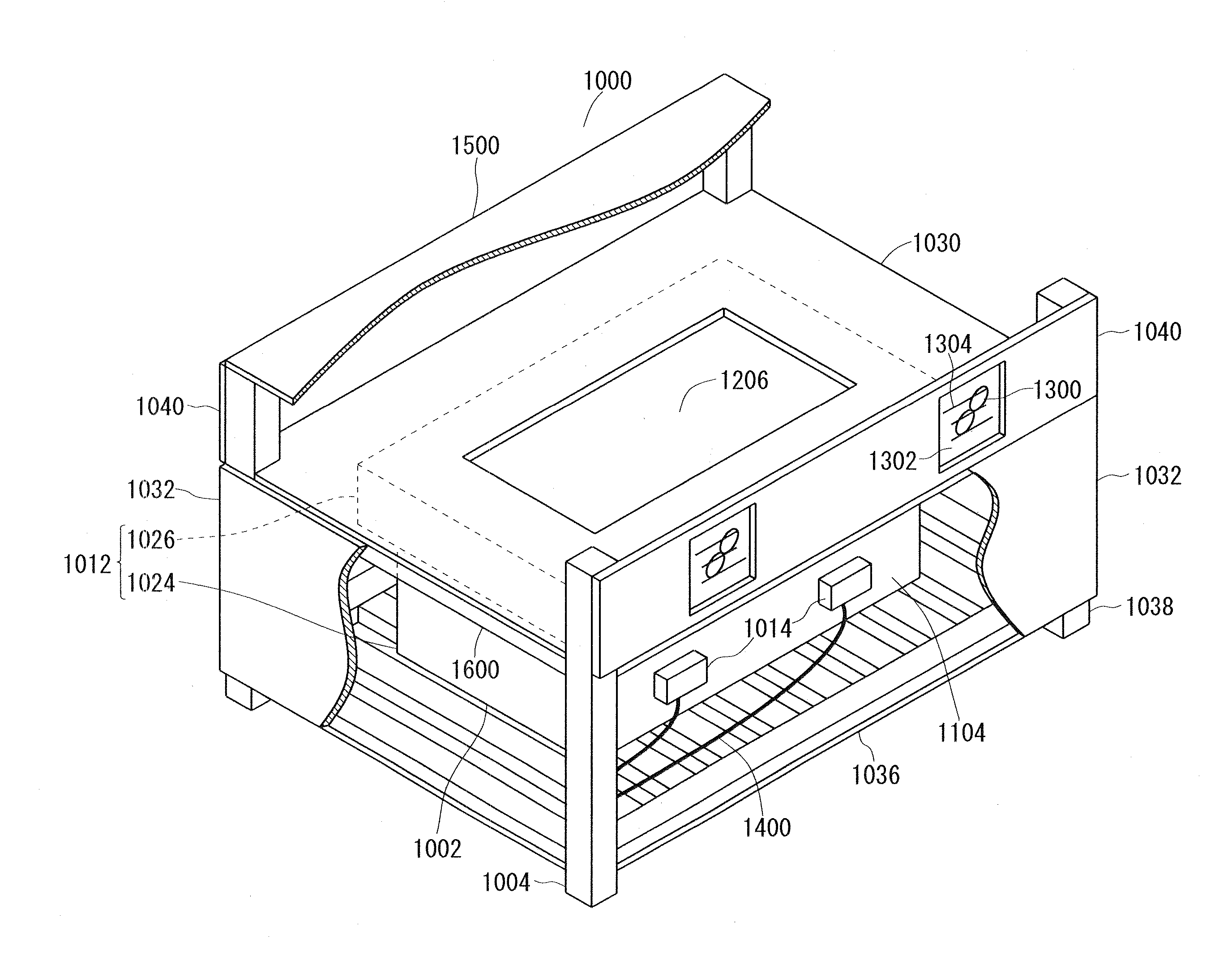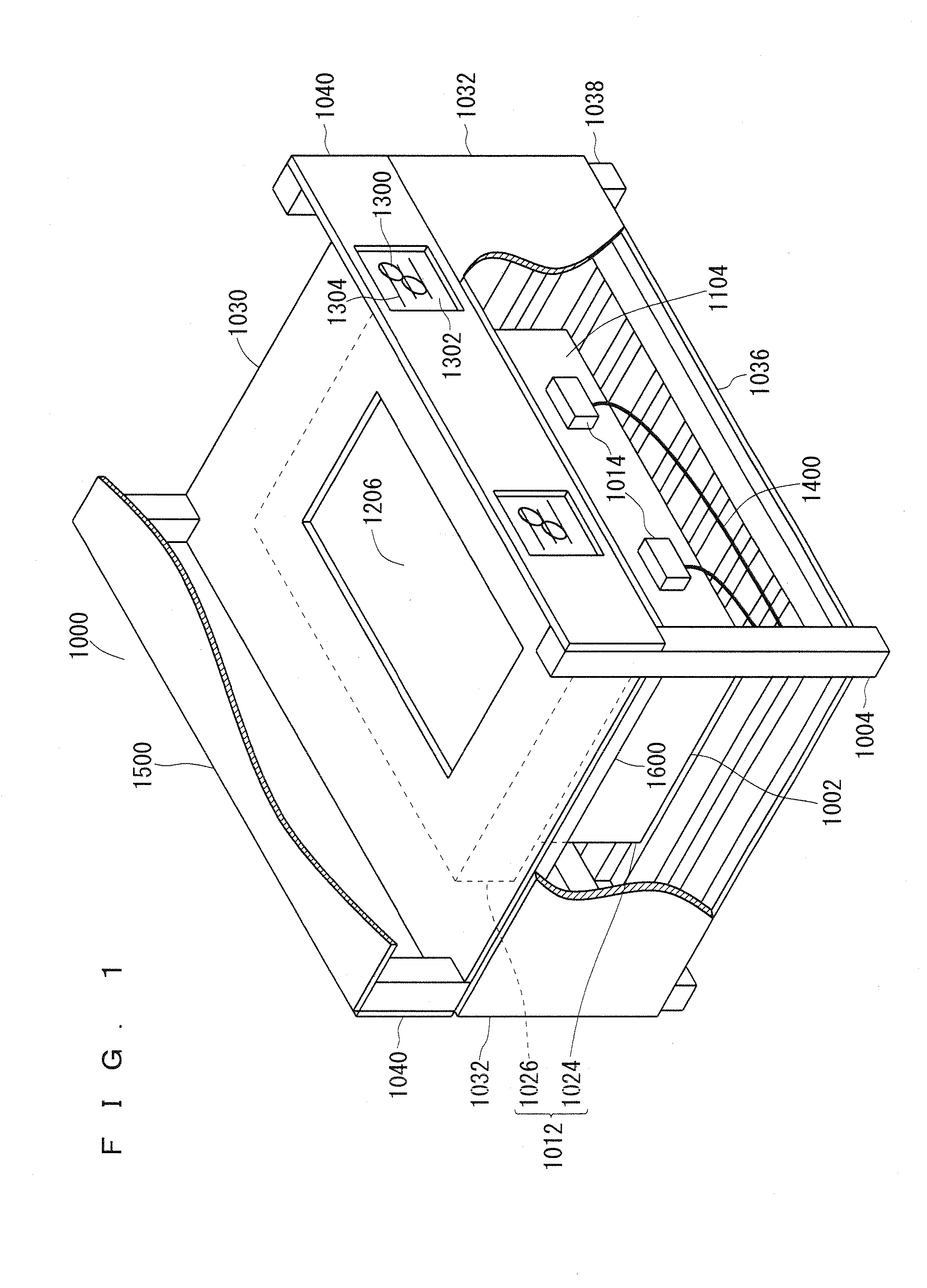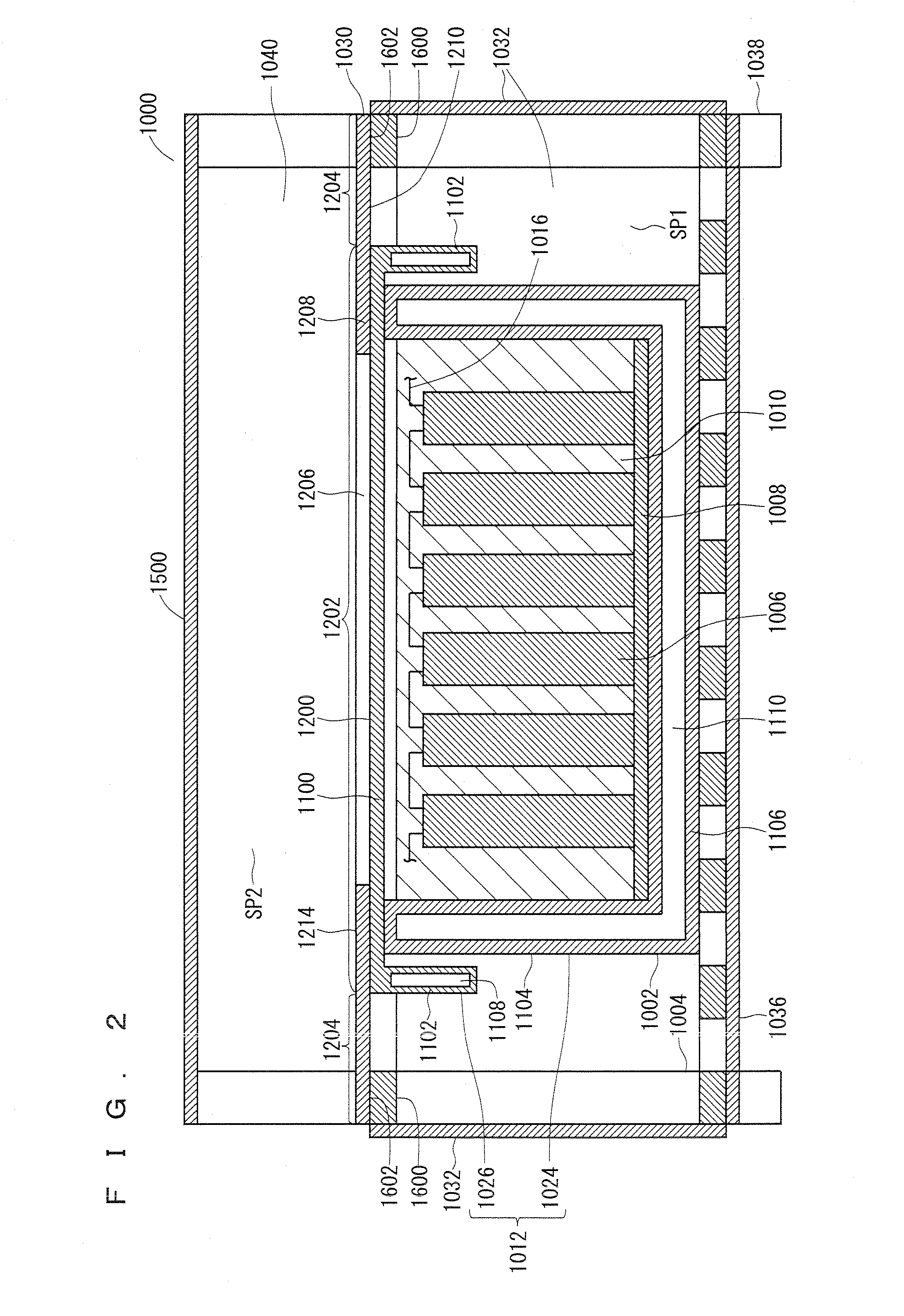Battery housing structure
a battery and housing technology, applied in the field of battery housing structures, can solve the problems of affecting the uniformity of temperature the liable rise of the temperature around the electrode terminal, and the inability to discharge current in the electrode terminal, so as to achieve efficient heat radiation, enhance the uniformity of temperature, and reduce the heat resistance at the interface between the first wall and the plate.
- Summary
- Abstract
- Description
- Claims
- Application Information
AI Technical Summary
Benefits of technology
Problems solved by technology
Method used
Image
Examples
first embodiment
[0034](Outline of Battery Housing Structure)
[0035]A first embodiment relates a battery housing structure in a power storage device. The battery housing structure in the first embodiment is desirably combined with a constituent such as a bidirectional converter, a transformer, or a control circuit, to thus configure a power storage device. The power storage device is desirably connected to an electric system so as to adjustably supply and demand electric power. The battery housing structure in the first embodiment may be combined with other constituents, or may configure a device other than the power storage device.
[0036]FIG. 1 and FIG. 2 are schematic views showing the battery housing structure in the first embodiment, wherein FIG. 1 is a perspective view whereas FIG. 2 is a cross-sectional view.
[0037]In a battery housing structure 1000 in the first embodiment, a module battery 1002 is housed in a module battery housing rack 1004, as shown in FIG. 1 and FIG. 2. The module battery 10...
second embodiment
[0070](Outline of Battery Housing Structure)
[0071]A second embodiment relates a battery housing structure that replaces the battery housing structure in the first embodiment.
[0072]FIG. 3 and FIG. 4 are schematic views showing a battery housing structure in the second embodiment, wherein FIG. 3 is a perspective view whereas FIG. 4 is a cross-sectional view.
[0073]A battery housing structure 2000 in the second embodiment is identical to the battery housing structure 1000 in the first embodiment except that a top plate 2030 having no opening is used in place of the top plate 1030 having the opening 1206, as shown in FIG. 3 and FIG. 4. Therefore, in the description of the second embodiment, the same constituents as those in the first embodiment are assigned by the same reference numerals as in the first embodiment, and further, reference is made mainly to matters different from those in the first embodiment. The description of the first embodiment can be applied to matters that are not r...
third embodiment
[0079](Outline of Battery Housing Structure)
[0080]A third embodiment relates a battery housing structure that replaces the battery housing structure in the first embodiment.
[0081]FIG. 5 and FIG. 6 are schematic views showing a battery housing structure in the third embodiment, wherein FIG. 5 is a perspective view whereas FIG. 6 is a cross-sectional view.
[0082]A battery housing structure 3000 in the third embodiment is identical to the battery housing structure 1000 in the first embodiment except that a top plate 3030 having no opening is used in place of the top plate 1030 having the opening 1206 and a thermal conducting medium 3700 is held between a top wall 3100 and a first portion 3202 of the top plate 3030, wherein the top wall 3100 having a rib 3702 formed thereat is used in place of a top wall 1100 having a flat outer surface 1200. Therefore, in the description of the third embodiment, the same constituents as those in the first embodiment are assigned by the same reference nu...
PUM
 Login to view more
Login to view more Abstract
Description
Claims
Application Information
 Login to view more
Login to view more - R&D Engineer
- R&D Manager
- IP Professional
- Industry Leading Data Capabilities
- Powerful AI technology
- Patent DNA Extraction
Browse by: Latest US Patents, China's latest patents, Technical Efficacy Thesaurus, Application Domain, Technology Topic.
© 2024 PatSnap. All rights reserved.Legal|Privacy policy|Modern Slavery Act Transparency Statement|Sitemap



